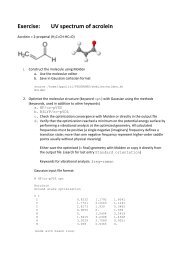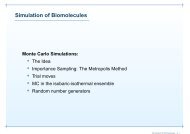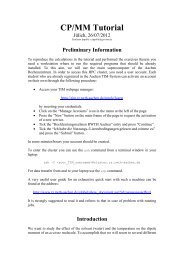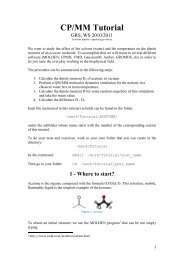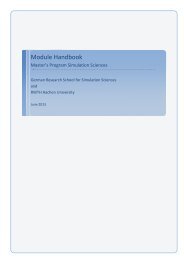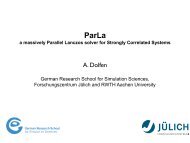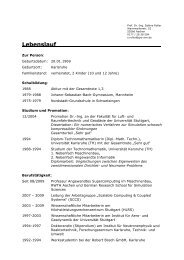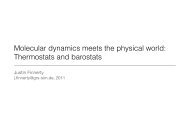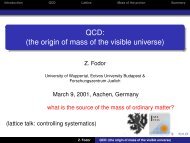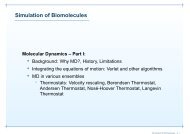Slides
Slides
Slides
Create successful ePaper yourself
Turn your PDF publications into a flip-book with our unique Google optimized e-Paper software.
Ab initio MD: CPMD<br />
• How to control adiaba4city? <br />
• Dynamics of Kohn-‐Sham orbitals as superposi4on of harmonic orbital <br />
classical fields, where ε j and ε i are the eigenvalues of occupied and <br />
unoccupied (virtual) orbitals: <br />
• Lowest frequency: <br />
ω e min ∝<br />
E gap<br />
µ<br />
• The frequency increases like the square root of the energy difference E gap , which is is the <br />
energy difference between HOMO (highest occupied molecular orbital) and LUMO <br />
(lowest unoccupied MO). <br />
• The frequency increases as the inverse of the square root for a decreasing fic44ous mass <br />
parameter μ. <br />
• To ensure adiaba4city, the difference to the highest phonon frequency <br />
should be large: ω min max<br />
e<br />
− ω n<br />
• The only adjustable parameter is μ (thus also called adiaba4city parameter) <br />
• Decreasing μ (lower kine4c energy, closer to BO surface) not only shi‚s the electronic <br />
spectrum upwards on the frequency scale as desired, but also stretches the en4re <br />
spectrum leading to an increase of the maximum frequency according to <br />
ω max e<br />
∝<br />
E cut<br />
µ<br />
where E cut is the largest kine4c energy in an expansion of the wave func4on in terms of a <br />
plane wave basis set. <br />
ω ij<br />
=<br />
( )<br />
µ<br />
2 ε j<br />
− ε i<br />
ω n<br />
max



